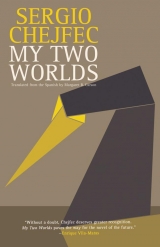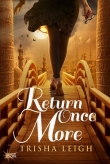
Текст книги "My Two Worlds"
Автор книги: Sergio Chejfec
Жанр:
Современная проза
сообщить о нарушении
Текущая страница: 2 (всего у книги 7 страниц)
In this way, then, my days are dramatizations of a tramp at leisure, of a charmed life spent out in the streets, like the dandy dropping in on a strange world, where he nevertheless fails to find the hoped-for escape. This is perhaps connected to the passage of time, to whose effects we all succumb – though in different ways of course. Every task is cumulative; and if a certain weariness sets in after years of walking up and down the streets, it’s logical to think it’s caused more by time than by habit. Hour after hour, like a robot, morning and afternoon, like a misfit. I was stupefied by sunsets, at the mercy of a kind of hypnosis by which anything at all made me curious and simultaneously apathetic. A desire to know would animate me just as I sank into aimless drift. Any detail would distract me, though generally for a mere few seconds: the lights of shops, the models of cars, the makes of buses. All but people, because my robot-like walker’s inertia kept me from focusing on anyone.
When I come to think about it, my evolution as a contemporary walker – my ideal state being somewhere between curious and skeptical – got sidetracked into my present state as a disappointed and at times infuriated walker, by a process that has dragged on for years. This all started when I began, at the time unawares, searching through urban landscapes for traces of the past. It was a great and irresistible weakness to which I finally succumbed. Conceivably, European cities, and my many walks through them over the years, may have had an influence. These cities, as we know, are famous for venerating their history, or their heritage, and they raise the curtain on a fortunate, bountiful present as an extension of a so-called living past – a past thus revealed as benign. I allowed myself to be carried away by clichés of living ruins and well-preserved artifacts, and the experience must have left me with the kind of sensibility that is conditioned, I suppose, to search wherever I’m walking for traces of forgotten days, even when finding them is rarely worth the effort. Because elsewhere, outside European cities, the traces are of a distinctly different order: they aren’t visible as such, or are of a different class, or else there is, quite simply, no apogee to celebrate. Whatever the case, I was defamiliarized, that was the elusive lesson of European cities, which may explain why I go looking for things that can’t be found, are basically invisible, or don’t exist; and that don’t satisfy me when I do find them, since I can’t take them seriously. And so my walks have turned into tortuous rituals, driven onward by the indifference that comes from years and years of behaving the same way.
That’s why almost everything is leading me to abandon my walks: what I search for, impossible to find, as much as what I discover, practically nothing. And yet an urgent, contradictory force is driving me forward; I cannot renounce walking or stepping out into the street. When I arrive at a given place, my curiosity is triggered at once: it may sound naïve and somewhat vitalistic, but I long to steep myself in the life and customs of the natives, to immerse myself in local habits and idiosyncrasies. A reading to discover, a story to live. But in my mimetic passion there quickly comes the point, which, moreover, arrives sooner and sooner, after I’ve walked no more than a few blocks: it’s the aforementioned weariness, distraction, something I might call “walker’s malaise”—a mixture of rage and emptiness, of thirst and rejection. From then on I act like a zombie: I see people as if I weren’t seeing them; the same applies to the façades of buildings and the far reaches of streets or avenues. I’m capable of appreciating certain details and recognizing worthy specimens from decades or centuries ago, ambiguous on the whole and fairly deteriorated now, even if well cared for, along with cityscapes and social mores and tics that awaken my curiosity and are unique, etc. But as if I’d ended up consumed by the blind traction of my automaton’s stride, intent solely on devouring the pavement until dusk, I instantly forget what I’ve just seen and taken note of or, rather, I toss it all into a jumbled corner of my memory, where everything piles up at random, with no hierarchy or organization.
So though I’m capable of remembering intersections, scenes, episodes, and generalized small bits of reality, I cannot put them in a sequence, let alone provide any reasonable context, any point of reference. What I saw two blocks earlier is on the same level as anything I saw yesterday, for instance, or a few months ago. Nonetheless I keep walking, propelled, or rather drawn onward, by my sense of ambiguity, by the malaise I spoke of earlier. Perhaps experience, strictly speaking, may be nothing but this; I mean, so much walking has diminished my capacity to feel admiration or surprise: the first block of any city triggers memories and comparisons that undermine the illusion or the confidence one normally places in the totality observed. Things cease to be one of a kind and are revealed to be links in a chain.
An interview program was just starting on the television during which recognized figures from the countryside would talk about their beginnings, about their families, or about the customs of yesteryear, as they put it in the lead-in. It was time to get ready for bed, I thought. I headed to the bathroom and was yet again impressed by its impeccable lighting, like an operating room without shadows. As I came out, a man was speaking whose intonations suggested he was getting on in years. He said that even though he had lived his entire life in the country, he’d never gotten over his fear of the dark, and ever since his childhood had thought of a day’s labor – not only his own, but everyone’s – as an attempt to avoid or postpone the coming of the night. He was known, the woman interviewing him said in a fawning tone, for his conversational gifts. I couldn’t tell, however, whether this was more an invitation for him to keep talking than a compliment. The fearful gentleman was silent while he thought of an answer; at first that’s what I supposed, but when several minutes had passed and he still hadn’t spoken, I assumed the program had ended abruptly. In the meantime I went in and out of the bathroom again, folded the map, put it in the backpack, got into bed and turned out the light. My last physical act, that I can remember at least, was turning off the television with the remote control, in case the sound came back on.
As I listened to the deep droning silence of the nighttime street, I naturally started thinking about the following day’s walk. On one hand, I was excited about getting to know the unknown; but also, as I intimated earlier, I felt I had the right to feel disappointed in advance. I thought of the man on the TV program and his fear, which he had been unable to overcome despite having spent his life in the country, where, as we know, one lives with the deepest, and most threatening darkness, so that he’d been subject time and again to these crises, and must necessarily have had infinite opportunities to conquer his fear. The last thoughts I remember having were about the route I’d be taking in the morning. I had high hopes for a perfect day, perhaps because of that I preferred not to visualize the city in advance; nonetheless something pulled me in the opposite direction too, a growing disappointment, unmistakable and hard to counteract, the result of my single, insistent certainty; namely, that my morale as a walker had been in a bad way for some time.
The reasoning that follows may seem a bit abstract, so I’ll expound on it quickly. When I walk, my impression is that a digital sensibility overtakes me, one governed by overlapping windows. I say this not with pride but with annoyance: nothing worse could happen to me, because it affects my intuitive side and feels like a prison sentence. The places or circumstances that have drawn my attention take the form of Internet links, and this isn’t only true for the objects themselves, which are generally urban, part of the life of the street or of the city as a whole, shaped precisely and distinguished from their surroundings, but also the associations they call to mind, the recollection of what is observed, which may be related, kindred, or quite distinct, depending on whichever way these links are formed. On a walk an image will lead me into a memory or into several, and these in turn summon other memories or connected thoughts, often by chance, etc., all creating a delirious branching effect that overwhelms me and leaves me exhausted. I’m a victim, that is, of the early days of the Internet, when wandering or surfing the Web was governed less by destiny or by the efficiency of search engines than it is today, and one drifted among things that were similar, irrelevant, or only loosely related. Until one reached the point of exhaustion over the needlessly prolonged Internet journey, with an ensuing loss of motivation to delve (or in my case, walk) any further, and then the moment of distortion would arrive, or of parallel nature, I don’t know which, when I would notice that every object had essentially turned into a link, and its own materiality had moved into the background, whose depth was virtual, peripheral and free-floating.
The Internet isn’t to blame, that’s obvious, but I carry the scars of having passed through that stage of absurd, free-floating links, when surfing the Web was an exercise in fickle relationships. At first it was an apt metaphor for my behavior during these urban strolls, as I sometimes call them, as well as for the associations that come to mind as I stroll, but then the typical slippage or contamination took place, and the metaphor ceased being descriptive enough to capture its correlative and itself become a symptom. It’s impossible for me to know how different my old-time, pre-Internet perceptions were; they probably were, in diverse ways. Before the Internet, my sense of a city was organized differently: my first impressions were stamped with their origins and the specific times, as it were, of their formation; they were bounded by the passage of time and by new experiences. And, in the resulting sedimentation, each memory retained its relative autonomy. But after the Internet, it happened that the same system formatted my sensibility, which ever since has tended to link events in sequences of familiarity, though these sequences may be forced and often ridiculous. Those sequences of familiarity lead to groupings that are more or less volatile, it’s true, that nonetheless tend to leave what’s unique to each impression on a secondary plane, diluting in part the thickness of the experience.
So that afternoon, when I was just about to give up on getting to the park, the idea of paying attention to the relative location of places, rather than to their literal position on the map, was an especially inspired one, though I can’t say if it was due to my reviled free-floating Internet sensibility or to a sudden distracted impulse. I looked the map over one last time and folded it – but didn’t put it away, in case I’d be needing it soon – said a mental goodbye to the mechanical uproar that was the street corner, and set out for the park. To get there I proceeded fairly straight on a pavement that was at first hidden, disappearing from time to time under highways or elevated structures. To one side was a medical school, aged buildings of a few, but high-ceilinged stories, clearly paired with the hospital pavilion I mentioned earlier. Further on, the path turned into a broad paved platform where crowds that grew increasingly larger gathered to wait for buses. There were several clusters of passengers, each group evidently waiting for a different bus. In one of the clearings between bus stops I saw the street vendor again, the one with the two-wheeled cart, now asking for help in unloading the merchandise I’d seen him pack up earlier. The man sold women’s clothing along with spare electrical parts and batteries. I supposed the weight was in the spare parts and batteries. That’s how I began to think about street vendors. .
That morning, my first thought had been about the man from the countryside. I’m not sure on which river of sleep I’d beheld him during the night, but I remember that just as I was about to wake up and start the day, in a half-awaking that seems like a half-sleep, both states habitual to me, I thought of the man who was afraid of the dark. I couldn’t tell if it was daylight yet, but I imagined that if it were still night, and if I were that man, I would be afraid. Then it occurred to me that the word might have been misused in the program. “Afraid” often needs qualification because it can be interpreted in various ways. Maybe he was referring to a kind of uneasy anticipation, as when one says “I’m afraid it will rain,” though the word can also refer to something more primal and uncontrollable.
When I opened the curtains I saw the beginning of a splendid spring day. Just below the window and across the street was a building under construction, and above it, since the land rose in that direction, one could see, through a row of leafy, evenly-spaced trees, the dome and the neoclassical spires of what seemed to be the cathedral. I turned on the television to listen as I got dressed. A voice that sounded different to me recited the price of seeds and said grains would be coming up next. I remembered how at the book fair the previous evening, each time I passed the booth for the local historical society I saw titles dealing with agrarian subjects, which of course reminded me of Argentinean culture in its rural, pampean, primary-school dimension, I’m not sure what to call it. I wanted to have a coffee quick and head out to the street, so I finished putting my things in order and went into the bathroom.
Once I was in the downtown of another city and saw a street vendor being robbed. I suppose he had just begun to set up or was about to leave; in any event, he was leaning over some cardboard boxes with his back to the merchandise. A passerby noticed he wasn’t paying attention, moved closer to the table, and carried off a bag of scarves or pashminas, whatever they’re called. That caused me to reflect that street vendors are at their most vulnerable, or simply at their weakest, when they’re setting up their goods or stowing them away. The street was busy, with people on all sides; and yet I was the only one who noticed what had happened. Even the victim himself, when he turned around, kept arranging his things as if nothing was wrong. A moment later he sensed that something strange was going on because his display had changed, things were missing, though he probably wasn’t sure, either. This tempted me to tell him he’d just been robbed, but I held off because I couldn’t explain why I’d taken so long to say something to him. So I looked behind me, as I always do, and above the mass of pedestrians I saw, a block away, the person who had taken the bag, a rather tall man who every so often glanced sideways as he went down the street, in case there might be any danger in pursuit.
As I’ve seen on other occasions, some vendors never stop unpacking and setting up their stand for the entire workday. They’re the ones harassed by the police. They lay their merchandise on the ground or on a flimsy tarp, or hold a lightweight board in their hands, and are more on the lookout for a warning signal than for the approach of the unlikely customer. The police, in their zeal, can be quite meticulous. Several days before the one I’ve been recounting here, as I stood on a downtown corner in another Brazilian city, I watched three or four policemen chase off a vendor, who, in his haste, left behind a wooden horse he’d clearly been using to support the board that held his merchandise. It was a solid horse, which resisted the kicks one policeman was giving it with all his might. Another policeman intervened and propped it diagonally against a tree trunk, so as to split the wood more easily. A strategy of no use either. Finally, as I was walking away, I saw two policemen jumping up and down on the horse, trying to break it up while the other officers looked on, engrossed by the operation and no doubt intrigued by the object’s resistance. I could go on with my reminiscences of street vendors. .
For instance, while living for a time in a provincial city I encountered, on a daily basis, a woman who sold embroidered tablecloths and napkins. She didn’t use a table, chair, or any other support, but stood on her perennial corner for hours, from midday until dusk, holding her goods in her arms and draped over her shoulders. She stepped forward timidly when she thought that a passerby, usually another woman, might be interested in her merchandise. Otherwise, she preferred to stand still, from time to time moving in circles to stretch her legs, I suppose. Seeing her walking like that I was reminded of those picketers in the United States, usually few in number, who circle round and round in the same spot, as if their protest were a kind of punishment.
Now and then, this woman was joined by another woman, who sold flowers from a bouquet, one at a time perhaps, since no other bouquet was visible. She stood against the wall, as if sinking into it, and looked as if she were waiting for someone who wouldn’t show up. The two of them made me wonder if some intermediate category existed to describe them, something between a street vendor and itinerant peddler. I remember that as I passed them I tended to think of tango songs, the stories and scenes described in their soap-operaish lyrics, perhaps a line at most, or I would think of movies recounting the lives of long-suffering people, set in another century or another era. People punished by poverty, victims of society and their neighbors, with no means of self-defense and survival other than their dignity. Pathetic, humiliating, and tragic stories. These belonged to a long era that I had, I suspected, for the most part missed, though it was familiar to me, depending on how one defines “familiar”; anyhow, it was a cultural era that I’d experienced, though only at its tail end – which might explain the flurry of songs and movies with such motifs – and in such a way that it had no deep or direct influence on me. And why hadn’t it touched me more? Because I’d been privileged, I thought, that’s why. The waves of evil and the world’s tragedies, multiplied by the number of people who had suffered them and suffered them still, had ebbed, along with their sentimental effects, before they reached me. It was as if at that moment an inner voice had declared: “This guy”—me—“is spared.” The misfortunes of the world didn’t touch me. .
If I compared myself with those two women, I would be relieved and somehow consoled, and my sense of well-being confirmed, though in truth my well-being was quite modest, and not all that far-removed from the state of both women. And even though I’d experienced my own share of ups and downs, and suffered mishaps, failures and humiliations, this didn’t change the nature of my situation. Whenever I contemplated lives like those two women’s, I was mesmerized by I don’t know what kinds of memories and fears, and I would compare myself with the most wretched, the most unfortunate, the dregs of urban humanity. From one angle, these comparisons were an obvious comfort; from another, they were hugely disturbing. At my age, to worry about stupidities conceived at the margins of history and of each life’s coordinates, mine in this case, exposed the same obscene abundance to which I was accustomed and that I’d naturalized to the point of considering it obvious and guaranteed. Nonetheless, it also showed the quicksand on which everything rested.
No other street vendor made a greater impression on me than those two women, about whom I knew nothing, neither their situation nor their nationality, let alone their names, or whether they had families, husbands, or children, though I assumed they did, and that they, too, were going through hard times. I could imagine these women getting dinner for their families with the little they brought home, the ensuing meals that were shared in a silence fraught with repressed anger and massed reproaches. Or the opposite: the carefree, optimistic joy of scarcity, the good fortune of living in the moment. It’s very likely that on the days before or after I saw the women, and more than once during my stay in that city, since I was there for a long time, I crossed paths with people who were still worse off, true outcasts and exiles from human society, with no family and, most likely, no identity, who faced tremendous physical challenges, etc.; nevertheless, not even the most wretched individual elicited a fraction of the anguished compassion that the floating presence of these two ladies inspired in me as they tried to hide the fact that they were selling fairly superfluous merchandise.
No need for anyone to think much about why. The women affected me deeply because unlike other street people or enterprising sidewalk vendors, they were, in their shyness and solicitude, and even in their modesty, an image of myself; that is, I would have behaved the same way if I had shared their fate. I thought: They’re not good at this, and I wouldn’t be either; they’re there because they have no choice, circumstances forced them into it, as they might have forced me as well; they feel ashamed, probably unjustifiably so, but uncontrollably – just as I would have.
One afternoon I entered a small café, no bigger than four tables, near the corner where the women stood. It was going to rain at any moment and I told myself it would be best to wait it out while having a coffee. I took a seat in the back, my preferred spot for looking at everything that interests me, although, given the dimensions of the café, in this case the perspective was limited. Only after I’d been sitting there for a good while, thinking of almost nothing, did I glimpse the flower-seller hunched over the counter. At that moment she was taking small bites of something she held in her hands; I couldn’t see what it was because she didn’t once pause or lower the food from her mouth. Most likely it was a sandwich, or plain bread, the typical stale piece given to beggars. I understood that way of eating as another sign or example of her repressed state, or perhaps more exactly, inhibition, because if there was anything revealed by those minimal gestures, it was her guilt or shame. Anyhow. Afterward it began to pour outside. The woman had by now finished the sandwich and for the rest of the time she sat with her head turned toward the street, avoiding my gaze as if she didn’t want to be observed.
I now proceeded according to a territorial intuition, if you can call it that, and at the end of a new and lengthy stretch of pavement, during which I came across several bus stops that were mobbed, inevitably, with people, I finally made out the park, that large green mass inside the yellow city of the map. As I walked toward it on a heavily trafficked avenue, so wide that when I crossed at a light I hardly had time to reach the pedestrian island, the green tree tops in the distance seemed exaggeratedly compact, like gigantic broccoli, with the flattened shade of the park beneath its branches, almost cavernous or jungle-like; as I went along it occurred to me that the contrast between the voluminous green and the city encircling it was an analogy, clearly deliberate, for the physical condition of the country as a whole, and even, you could say, for its satellite image: the Amazonian jungle and its emerald-green life, extensive and complex, in contrast to the materiality of the Brazil that was economic or urban or constructed, I don’t know what to call it.
I took advantage of a path that opened off the avenue to enter the park, not far from the traffic light where I had crossed. Trees with low canopies stood on either side of the path and overarched its entire length, which at first, until my eyes adjusted, made me feel I’d unexpectedly come upon a secluded and astonishingly dense grotto. As soon as I’d stepped inside the park, I realized I had found what I referred to earlier, my secret dream: the park was too large not to have that air of abandonment which so appeals to me. The shadowy, and above all, overgrown edges of the path exuded that unique mixture of neglect, dirtiness, and danger which puts one on the alert; and the truth is, I didn’t need to go very far before I’d verified my impression, since when I looked down I saw that the faded gravel had scattered and turned nearly to dust, suggesting that the path was sporadically used and infrequently maintained. Even the shapes of those pebbles, all similarly rounded, like seeds from an almost barren tree, made me realize I was walking on a surface typical of underused parks, where dust, earth and time – the sand of cities – accumulate with nobody’s help.
As I walked on along the path, the noise of the avenue began to subside, in great part owing to a curve that as a dramatic entrance seemed, at first sight, to have been a success: visitors had to change course immediately, which not only helped them put the city noise quickly behind them, but also signaled that they could lay down whatever burdens they’d presumably carried in from the street. For the attentive observer, the biggest challenge was locating the precise boundary between path and forest, or terrain, I don’t know what it’s called, the park preserve. Because anyone who looked closely, as I did, would see a strip of diffuse matter, insistent even in its ambiguity, containing elements from both sides and impossible to classify. This can probably be said of all paths of any kind, but at that moment I interpreted it as a visitor’s second lesson, possibly harder to assimilate but perhaps more lasting in its effect; though that required greater powers of deliberation than I could imagine at that moment.
When I came out of the bathroom that morning to finish dressing and set off at long last, I heard a familiar voice on the television. It was the man who was afraid, talking about other subjects; now it was the care and feeding of animals. In the country, he was saying, livestock should be raised with care, and as for wild animals they should be regarded with respect. I guessed it was a children’s program, though why, if that were the case, was the man’s fear of the dark considered so remarkable? The interviewer, a man now, was asking about further differences between domesticated and wild animals. The answer surprised me: Wild animals never seem tired, because when that happens they hide themselves, whereas domesticated animals always move languidly, and seem tired even when they’re not. I was expecting a more classical distinction, and then, I don’t know why, I felt I had to do a recap. . I was in my hotel room, sitting on an unmade bed, in the south of Brazil, I had visited a book fair the day before after coming out of a conference, then afterward read a so-called anonymous message and before I went to sleep had listened to the same person I was hearing now, except talking about something else.
I told myself that perhaps it would be a good thing to keep on listening, and as I listened more closely I detected a certain spiritual hedonism in the voice of the man who was afraid, which made me wonder whether he might be some kind of guru or preacher, maybe a rural mystic given to changeable opinions. Very likely, I thought, he was a guest at the book fair. I was intrigued by the form of his eloquence, his nonchalant air that made no distinction between what was central and what was secondary in what he was talking about, a trait that perhaps reflected a certain insecurity or else rote memorization. In the end a rather unexpected and above all revealing thought occurred to me: I had only to use the remote control to see his face, but I didn’t because for a moment I dreaded that I would see my own image on the screen. Perhaps the anonymous messenger was about to reap his reward, because the impact the man who was afraid would have on me would be the most resounding success of his campaign. I imagined myself speaking like that from that moment on, and, still worse, writing like that, too, forever following the most haphazard thoughts in a tortuous way. But I understandably wanted to stop thinking like this, so I turned off the television, gathered my things, and went out in search of my coffee.
Generally, when I walk I look down. The ground is one of the most revealing indicators of the present condition; it is more eloquent in its damages, its deterioration, its unevennesses, and irregularities of all sorts. I’m referring to urban as well as rural ground, difficult or congenial. And I’m specifically referring to the ground of paths, to ground altered by humans in general, because ground in the abstract, the ground of the world, speaks different, near-incomprehensible languages. Walking is, in part, a kind of superficial archaeology, which I find greatly instructive and somehow moving, because it considers evidence that’s humble, irrelevant, even random – the exact opposite of a scientific investigation. It’s evidence that, because of its unimportance and its secondary nature, restores a way of inhabiting time: one is an eyewitness to the anonymous, to what history can’t classify, and simultaneously witness to what will survive with some difficulty. And for that reason, when I walk on paths I’ve been inclined to leave behind faint, minimal marks – the proverbial initials or the name drawn in the dirt with a stick, ephemera that vanish quickly from the ground or from walls, like sodden footsteps on a rainy day or shoe prints. Not because I believe someone will decipher them in my wake, but because the action implies an innate impulse, one can only hope to leave fleeting traces. Similarly, I regard the random things that make up the path as simple and moving: the blending of varied materials, the wear and tear of age, the former uses, etc., that are at times revealed and which transport me to the lethargic scale of banal discoveries, even predictable at times, yet transcendent because they evoke the secondariness I just mentioned. In fact, one of my greatest weaknesses are those paths that are sometimes traced onto sidewalks and public stairways, the result of countless steps of people in a given place, like an invisible mechanism.








